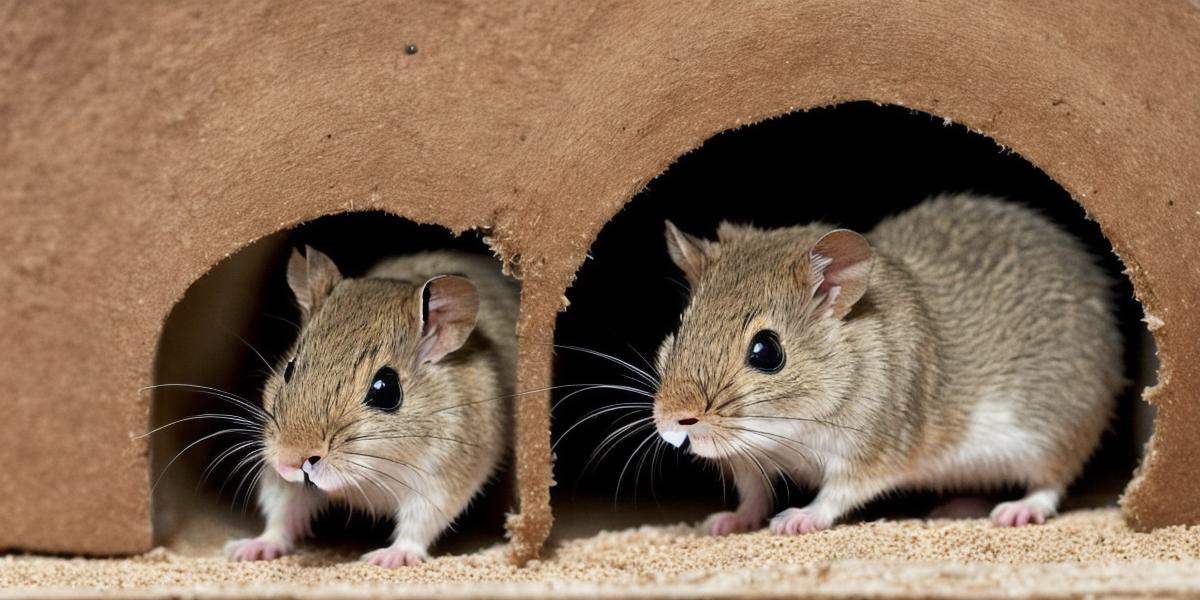Sleeping with your dog by your side can be a rewarding experience, but as your pup grows older, it may become more challenging for both of you. Many older dogs require more space and may have different sleep patterns than younger ones, leading to disruptions in your own sleep. If you’re looking to create a peaceful sleeping environment for yourself and your family, it’s time to train your dog to sleep downstairs.
In this guide, we will explore the reasons why training your older dog to sleep downstairs is essential, provide step-by-step instructions on how to do it, answer common
FAQs
, and offer tips and advice for success. By following these steps, you can enjoy a restful night’s sleep without any disruptions from your furry friend.
Why Train Your Dog to Sleep Downstairs?
Before we dive into the training process, let’s explore why it’s crucial to have a well-behaved dog when it comes to sleeping. There are several reasons why it’s essential to train your dog to sleep downstairs:
- Space: As your dog ages, it may require more space than younger ones, making it difficult for you and your family to get a good night’s sleep. By training your dog to sleep downstairs, you can free up more space in your bedroom, allowing everyone to enjoy a comfortable night’s rest.
- Noise: Older dogs can be quite noisy when they are sleeping, especially if they have bad breathing or snoring problems. Training your dog to sleep downstairs can help reduce the noise levels in your bedroom and make it easier for you to relax and get a good night’s sleep.
- Safety: If your older dog is not well-behaved at night, it could pose a danger to itself or others in the house. By training your dog to sleep downstairs, you can ensure that it is safe and comfortable in its designated area, reducing the risk of accidents or injuries.
Step-by-Step Guide to Training Your Dog to Sleep Downstairs
Now that we’ve established why it’s important to train your dog to sleep downstairs, let’s take a look at how to do it:
- Choose a Designated Area: The first step in training your dog to sleep downstairs is to choose a designated area for it to sleep. This could be a crate, bed, or mat that you place in a quiet corner of the room. Make sure the area is comfortable and has enough space for your dog to move around.
- Use Positive Reinforcement: Positive reinforcement is an effective way to train your dog to do something new. When your dog starts to settle into its designated area, give it lots of praise and treats. This will help it associate the area with positive experiences and make it more likely to continue sleeping there.
- Establish a Routine: Dogs thrive on routine, so it’s important to establish one when it comes to bedtime. Make sure your dog goes for a walk or gets some exercise before bed, then bring it to its designated area and give it lots of praise and treats. This will help it associate the area with sleep and make it more likely to settle down there quickly.
- Be Consistent: Consistency is key when training your dog. Stick to your routine and be consistent in your reinforcement, even if your dog takes a few nights to adjust to its new sleeping arrangements. With time and patience, your dog will learn to associate its designated area with sleep.
- Monitor Your Dog’s Progress: Keep an eye on your dog’s progress as you train it to sleep downstairs. If it starts to regress or have accidents in the house, take a step back and re-evaluate your approach. With patience and persistence, you can successfully train your older dog to sleep downstairs.
FAQs

Here are some common questions that people have about training their dogs to sleep downstairs:
- Can I use punishment to train my dog to sleep downstairs?
No, punishment-based training is not effective and can actually harm your dog’s emotional well-being. Instead, focus on positive reinforcement and consistency in your approach.
- How long will it take for my dog to adjust to sleeping downstairs?
The amount of time it takes for your dog to adjust to sleeping downstairs will depend on its individual personality and the severity of its previous behavior. With patience and consistency, you can expect your dog to adjust within a few weeks or months.
- Can I use my dog’s favorite bedding in its designated area?
Yes, you can use your dog’s favorite bedding in its designated area to make it more comfortable and inviting for them to sleep there. However, make sure the bedding is clean and free of any odors that may be distracting or uncomfortable for your dog.
- What should I do if my dog has accidents in the house?
If your dog has accidents in the house while training to sleep downstairs, it’s important to remain patient and consistent with your approach. Use positive reinforcement by giving them lots of praise and treats when they go to their designated area, and don’t scold or punish them for accidents. If the accidents continue, you may need to re-evaluate your approach or consider taking your dog to a professional trainer for additional guidance.
Tips for Successful Training Your Dog to Sleep Downstairs
Training your dog to sleep downstairs can be a rewarding experience for both of you. Here are some tips and advice to help you succeed:
- Be Patient: Training takes time, so be patient with your dog as they adjust to their new sleeping arrangements. Don’t expect immediate results, and be prepared to put in the effort to achieve your desired outcome.
- Use Positive Reinforcement: Focus on positive reinforcement by giving your dog lots of praise and treats when they go to their designated area. This will help them associate the area with positive experiences and make it more likely that they will continue sleeping there.
- Stick to a Routine: Dogs thrive on routine, so make sure you establish a consistent bedtime routine for your dog. This will help them feel comfortable and secure in their designated area.
- Create a Comfortable Environment: Make sure the area where your dog sleeps is comfortable and inviting. Provide them with their favorite bedding, a quiet space, and a cozy blanket to snuggle up in.
- Be Consistent: Consistency is key when training your dog. Stick to your approach and don’t make any sudden changes that may confuse or disrupt your dog’s progress.
Conclusion
Training your older dog to sleep downstairs can be a rewarding experience for both of you. By following these steps, using positive reinforcement, establishing a routine, and being consistent in your approach, you can create a peaceful sleeping environment that benefits both you and your furry friend. With patience and perseverance, you can achieve your desired outcome and enjoy a restful night’s sleep without any disruptions from your dog.



